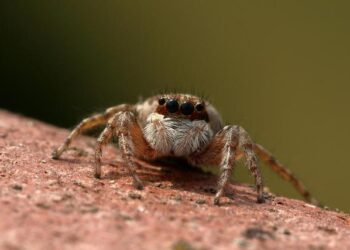“I’ve seen everything from a child, coming up,” Louis Armstrong once said. “Nothing I ain’t never seen before.”
He wasn’t kidding. In his revelatory 1954 memoir, Satchmo: My Life in New Orleans, the legendary entertainer recounts his hardscrabble childhood in “disgustingly segregated and prejudiced” New Orleans. Armstrong doesn’t sugar coat the realities of his early life—digging through trash cans outside restaurants to find food he could sell, surviving the violence and chaos that surrounded him.
But it is the pioneering jazz genius’s overwhelming empathy and humor that make this autobiography a must-read. With what writer Dan Morgenstern (in Terry Teachout’s definitive biography Pops: A Life of Louis Armstrong,) calls Armstrong’s “ceaseless fascination with the foibles of human beings,” he vividly paints a picture of the eccentrics who populated turn-of-the century New Orleans. Constantly looking for the good in everyone, for tender mercies and acts of kindness, Armstrong celebrates the sort of generosity he’d eventually be famous for.
A sensible perfectionist, Armstrong would take New Orleans, and the lessons it taught him, to stages and screens around the world. “When I pick up that horn, that’s all,” he once said. “The world’s behind me, and I don’t feel no different about that horn now than I did when I was playing in New Orleans. That’s my living and my life. I love them notes. That’s why I try to make them right.”
Little Louis
“Mayann told me that the night I was born there was a great big shooting scrape in the Alley and two big guys killed each other,” Armstrong writes in Satchmo: My Life in New Orleans.
Until the day he died, Louis Daniel Armstrong believed he was born on July 4th, 1900. But according to Teachout, he was actually born on August 4, 1901, to William Armstrong and a 15-year-old Mary Ann Albert (whom Armstrong called Mayann).
Armstrong was raised by his beloved paternal grandmother, Josephine, in a New Orleans ward teaming with mayhem and music. “There were churchpeople, gamblers, hustlers, cheap pimps, thieves, prostitutes, and lots of children,” he writes. “There were bars, honky-tonks and saloons, and lots of women walking the streets for tricks to take to their ‘pads’ as they called their rooms.”
The people-pleasing child, proudly wearing his white Little Lord Fauntleroy suit, would move to an even tougher part of town with Mayann and her sister, Mama Lucy, when he was five. Armstrong’s love for the hard-drinking, humorous, big-hearted Mayann (whom Teachout believes was occasionally a sex worker) and the values she instilled in him radiate from every page.
“Whether my mother did any hustling, I cannot say,” Armstrong writes. “If she did, she certainly kept it out of my sight. One thing is certain; everybody from the churchfolks to the lowest roughneck treated her with the greatest respect. She was glad to say hello to everybody and she always held her head up.”
Armstrong held his own head up even when he roamed barefoot through the streets, looked after by an extended community, and soaking in everything he saw and heard. The famed Funky Butt Hall was on the corner where he lived, and though Armstrong was not allowed in, he became enamored with the revolutionary blues and jazz that was percolating within as he listened from the sidewalk. “As I grew up,” he writes, “I observed everything and everybody. I loved all those people and they loved me. The good ones and the bad ones all thought Little Louis (as they called me) was OK.”
Silver Lining
At only eleven years old, Armstrong was selling newspapers and singing in a quartet in the fabled red-light district of Storyville. “Singing at random,” he writes, “we wandered through the street until someone called to us to sing a few songs. Afterwards we would pass our hats and at the end of the night we would divvy up.”
>>> Read full article>>>
Copyright for syndicated content belongs to the linked Source : VanityFair – https://www.vanityfair.com/hollywood/louis-armstrong-memoir














![[News] Japan Develops 10nm Nanoimprint Technology, with Potential to Tackle EUV Bottleneck – TrendForce](https://earth-news.info/wp-content/uploads/2025/12/329851-news-japan-develops-10nm-nanoimprint-technology-with-potential-to-tackle-euv-bottleneck-trendforce-360x180.jpg)
















